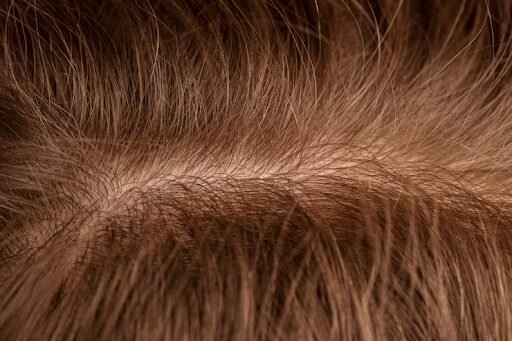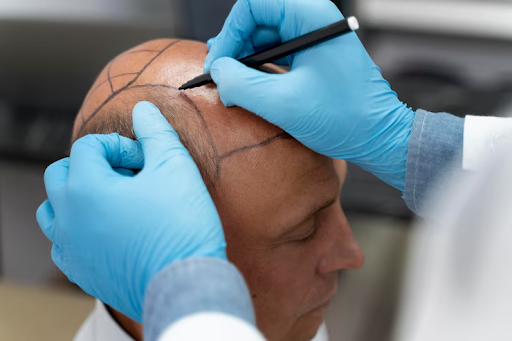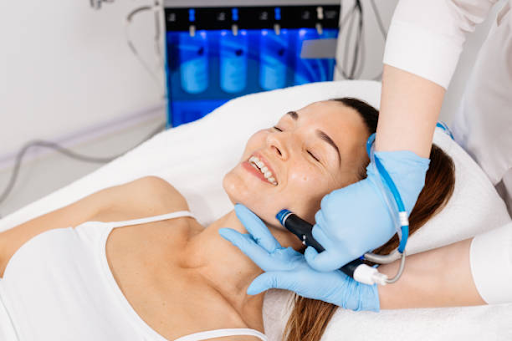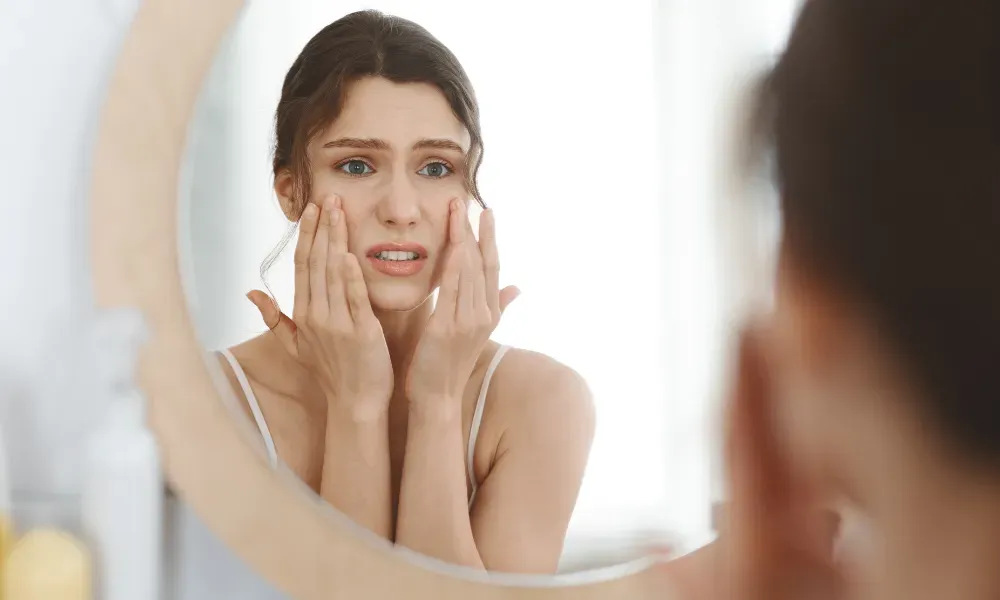Fashion
What to Consider Before Investing in High-End Women’s Fashion

Investing in high-end women’s fashion is about following trends and finding pieces that resonate with your style and meet your wardrobe needs. High-end fashion offers the allure of superior quality and exquisite craftsmanship, which often translates to better wearability and longevity. However, with these advantages come considerations essential to making informed shopping decisions. This guide will walk you through the vital aspects to consider before investing in luxury fashion, ensuring that your choices align with your lifestyle and fashion philosophy.
Understanding Your Style
Understanding your style is one of the first steps in investing in high-end fashion. You can make more thoughtful decisions when purchasing luxury items by identifying the elements that define your aesthetic preferences. Fashion should represent who you are, and choosing pieces that align with your identity can bring more satisfaction and confidence in your purchases. For example, if your style leans towards classic elegance, focus on timeless pieces with clean lines and neutral tones. In contrast, if your style is more eclectic, look for items that feature bold patterns and unique silhouettes. Whether you’re drawn to the understated elegance of a little black dress or the daring edge of avant-garde designs, ensuring your investments reflect your style is essential for long-term satisfaction.
Exploring various styles through curated selections, like Miu Miu for women, can also help refine your preferences and inspire you to seamlessly integrate new items into your existing wardrobe.
Budget Considerations
Establishing a budget is crucial when investing in high-end fashion, as these pieces often have a significant price tag. Consider your fashion needs against your financial capacity to determine how much you will spend on luxury items. Quality over quantity should be the guiding principle; investing in a few high-quality pieces rather than numerous lower-quality items is generally better. Prioritize items that will have the most impact on your wardrobe. For instance, a well-tailored coat or a versatile handbag will likely offer more utility than a trendy item that may fall out of favor.
Setting a budget also helps focus your search and prevent impulse buys, allowing you to allocate funds to pieces that enhance your wardrobe. Remember, investing in fashion doesn’t always mean making large purchases simultaneously. Saving for the right pieces that meet your needs and complement your style is a strategic and worthwhile approach to building a luxury collection.
Evaluating Quality and Craftsmanship
Quality and craftsmanship are foundational elements of high-end fashion. Luxury items are often defined by their use of premium materials and exceptional attention to detail. When assessing an item, closely examine the fabric, stitching, and finishing touches. High-quality fabrics feel comfortable and retain their shape and color over time, while impeccable stitching ensures durability and a pristine appearance. Moreover, detail-oriented craftsmanship often includes hand-sewn elements and meticulous construction techniques, which contribute to a piece’s overall value and longevity.
Investing in well-made pieces means committing to fewer replacements over time. Reducing disposable fashion consumption offers not only aesthetic and functional benefits but also sustainability. As such, evaluating the quality of potential purchases is fundamental to making informed fashion investments.
Assessing Occasion Appropriateness
Another consideration before investing in high-end fashion is the versatility of a piece across different occasions. Versatile items can transition seamlessly from day to night, from casual to formal settings, enhancing their utility and value. Consider the occasions you frequently attend and ensure your luxury items complement those settings. For instance, a sophisticated blazer can be a staple for business meetings and pair flawlessly with jeans for a more casual look. In contrast, a high-quality evening gown would be suitable for formal events.
Purchasing items that are appropriate for multiple settings not only extends your wardrobe options but also maximizes the return on investment. By aligning your high-end purchases with your lifestyle, you can wear them repeatedly, thus justifying the initial cost.
Ensuring Proper Sizing and Fit
Size and fit are critical aspects when purchasing high-end fashion. Designer clothing often follows different sizing charts and standards, which may vary significantly from brand to brand. To avoid costly mistakes, know your measurements and compare them with the sizing guide provided by the designer. Trying on garments whenever possible can provide additional assurance. The right fit not only enhances comfort but also improves the garment’s appearance and your overall silhouette.
Tailoring is also an option to consider for high-end pieces. Even the most exquisite garment could benefit from adjustments for a tailored fit. Professional alterations can ensure that the piece complements your body shape perfectly, adding a bespoke touch to your ready-to-wear items. Therefore, attention to sizing and fit is crucial in achieving a polished and sophisticated look.
Understanding Care and Maintenance
Caring for high-end fashion items is paramount to preserving their beauty and longevity. Each piece typically comes with specific care instructions; following these is essential to maintain the garment’s quality. Some luxury items may require dry cleaning, while others could be suitable for delicate handwashing. Proper storage is also a consideration; items should be stored away from direct sunlight or damp environments to prevent discoloration and fabric degradation. Use padded hangers for delicate dresses and blouses, and consider dust bags for storing handbags.
Regular maintenance checks, such as inspecting for loose threads or minor tears, can prevent further damage. By understanding and committing to proper care and maintenance routines, you ensure that your investments remain pristine and continue elevating your wardrobe for years to come.
Conclusion
Investing in high-end women’s fashion can be rewarding, offering timeless style, superior quality, and lasting satisfaction. By considering personal style, budgetary constraints, quality, versatility, sizing, and proper care, you can make informed decisions contributing to a cohesive and elegant wardrobe. High-end fashion is not merely about owning luxury items; it’s about embracing a form of art that complements and enhances your lifestyle. With the right considerations and thoughtful purchases, luxury fashion can transform your wardrobe and express your individuality with grace and sophistication.
Beauty
What Hair Type Responds Best to FUT or FUE

Choosing the right hair transplant method is essential for achieving natural-looking, long-lasting results. The two most commonly used techniques—FUT (Follicular Unit Transplantation) and FUE (Follicular Unit Extraction)—each offer distinct advantages depending on a patient’s hair type, degree of hair loss, and personal goals. If you’re exploring your options in North Carolina, both FUT hair transplant in Raleigh NC and FUE hair transplant in Raleigh are offered by leading clinics with modern technology and experienced surgeons.
In this guide, we’ll discuss which hair types respond best to FUT or FUE, what to expect from each procedure, and how to determine which approach may suit your unique needs.
Understanding the Basics: FUT vs. FUE
Before diving into hair type compatibility, it’s important to briefly understand how these two methods differ:
- FUT (Follicular Unit Transplantation) involves removing a thin strip of scalp from the back of the head (the donor area), then dissecting it under a microscope to extract individual follicular units. These are then implanted into the balding areas.
- FUE (Follicular Unit Extraction) involves extracting individual follicular units directly from the donor area using a small punch device, leaving no linear scar.
Both techniques aim to restore hair density and coverage, but each comes with different recovery profiles, scarring potential, and suitability for specific hair types.
Hair Type and Texture: Why It Matters
Your natural hair type plays a major role in determining how effective a transplant will look. Key factors include:
- Curl pattern (straight, wavy, curly, or coily)
- Hair shaft diameter (fine, medium, coarse)
- Hair colour vs. scalp contrast
- Density of donor hair
Some hair types can achieve better coverage and a more natural aesthetic with fewer grafts, making them ideal candidates for either FUT or FUE depending on other variables.
Best Hair Types for FUT Hair Transplant in Raleigh, NC
FUT is often ideal for patients with the following characteristics:
Thick, Dense Hair

Patients with thick hair shafts and high donor density tend to benefit from FUT because more grafts can be harvested in a single session. Thick hair provides better coverage and volume, especially useful when treating large bald areas.
Wavy or Curly Hair
Wavy and curly hair types offer more visual scalp coverage, meaning fewer grafts are needed to create the illusion of fullness. FUT allows the surgeon to harvest a large number of grafts efficiently from the densest part of the scalp.
Patients Needing High Graft Volume
If you have extensive hair loss (Norwood Scale 4 or above), FUT is often preferred because it can yield a higher number of grafts in one session compared to FUE. This is particularly beneficial for patients planning a single, comprehensive procedure.
Scar Concealment Isn’t a Major Concern
Since FUT leaves a linear scar, it’s more suitable for individuals who typically wear their hair longer in the back and aren’t concerned about concealing the donor area.
Best Hair Types for FUE Hair Transplant in Raleigh
FUE is ideal for patients who want minimal scarring and faster recovery, and it suits particular hair types as well:
Fine or Straight Hair
FUE works well for straight or fine hair types, especially in smaller transplant areas. Although fine hair offers less coverage per graft, FUE allows for strategic placement of follicles to maximise the aesthetic outcome.
People Who Prefer Short Hairstyles
FUE is the preferred method for those who wear short hair, as the procedure results in tiny dot scars that are nearly invisible, unlike the linear scar from FUT.
Patients with a Tight Scalp
For individuals with tight scalp skin—where FUT strip removal may be challenging—FUE offers a less invasive alternative.
Low to Moderate Hair Loss
FUE is commonly recommended for patients with mild to moderate hair loss or those needing smaller areas filled in, such as the temples or crown.
Ethnic Hair Considerations
Different ethnic groups present unique hair characteristics that can influence the choice between FUT and FUE:
- Afro-textured hair is often curly and coarse, which offers excellent coverage but requires a surgeon skilled in dealing with curved follicles. FUT may be more predictable in such cases.
- Asian hair tends to be straight and thick but with lower donor density, making FUE a more viable option when individual follicle placement is critical.
- Caucasian hair varies more widely, but many individuals have good donor areas suitable for either FUT or FUE depending on goals.
If you’re considering FUE hair transplant in Raleigh, consult a clinic experienced in working with diverse hair types to ensure proper technique and tools are used.
What About Hair Colour and Scalp Contrast?
Another factor to consider is the contrast between your hair and scalp colour. Individuals with high contrast (dark hair and light scalp) require more density to achieve natural-looking coverage. FUE allows for strategic graft placement in these cases, while FUT provides volume more effectively.
Those with low contrast (blonde or grey hair and light skin) may need fewer grafts, as scalp visibility is naturally reduced. Both techniques can be effective here depending on hair density and texture.
Long-Term Maintenance Considerations
Choosing the right technique isn’t just about the initial results—it’s about long-term planning. FUT generally preserves more of the donor area, which is useful if multiple procedures are needed over time. FUE, on the other hand, can overharvest the donor region if not done carefully, which may limit future options.
Some patients eventually opt for combination procedures—starting with FUT and later moving to FUE—to maximise donor resources.
Conclusion

Whether you choose a FUT hair transplant in Raleigh, NC, or go for an FUE hair transplant in Raleigh, the best approach depends on your hair type, goals, and lifestyle. Curly, thick, or dense hair types often achieve superior coverage with FUT, especially in cases of extensive hair loss. Fine, straight, or sparse donor hair may benefit more from the precision of FUE, especially when minimal scarring and shorter recovery times are a priority.
Ultimately, the best way to determine suitability is through a consultation with an experienced hair restoration surgeon who can assess your hair type, scalp condition, and long-term goals. With expert guidance and realistic expectations, both FUT and FUE can deliver natural, transformative results.
Beauty
Fat Freezing Machine to Buy: Comparing Models, Results, and Return on Investment

The emergence of non-invasive body sculpting procedures has given rise to numerous technologies, with cryolipolysis, or fat freezing, being one of the most sought after. For anyone operating a clinic, spa, or wellness center, the options and the impact of purchasing a fat freezing machine should be clearly understood with the increased demand for non-invasive fat removal procedures. A wide range of strategies exist to optimize operational expenses and enhance profit margins. Many people seem to be looking to international markets, particularly when it comes to purchasing china slimming machines, for cost effective and multifunctional equipment. This guide examines the operational principles of fat freezing, the desired features of a machine and how investments can be recovered over time.
Understanding How Fat Freezing Technology Works in Aesthetic Treatments
Fat freezing, also known as cryolipolysis, is a form of non-invasive treatment aimed at eliminating specific fats from the body using synchronized and controlled freezing. During the procedure, slack freezers and vacuums are applied to the areas of interest like abdomen, thighs and flanks and cool the fat layer to a subzero level that triggers cell death (apoptosis) by necrosis, leaving other areas unharmed. In the subsequent weeks, the body undergoes natural processes to get rid of the destroyed fat cells, culminating in a reduction of volume and improvement in contour.
Unlike other invasive procedures, cryolipolysis is performed without needing any anesthesia, sutures, or considerable recovery time. This makes it greatly attractive for patients looking for convenience and effectiveness. One of the primary advantages of fat freezing is the effect’s duration: fat cells that are destroyed do not come back. This is referred to as body contouring and is preferred by most patients as well as practitioners when coupled with a good diet and exercise.
The last decade has seen remarkable advancement in fat freezing technology. Modern machines, especially those fat freezing machines made in China, come with variable suction intensities, multiple applicators, and even combination therapies such as LED and vacuum suction. These new features highlight the advancements integrated into the design of modern engineering.
Different Models of Fat Freezing Machines
Selecting a model to purchase requires special attention to the cooling temperature, number of applicators, treatment duration, and coverage of the machine. Specific models have basic features such as single applicators that require repositioning after each treatment area, whereas others have dual or quad handpieces that allow for effortless multiple area simultaneous treatment.
Temperature management is extremely important. The best machines can cool as low as -10°C without precision, while also ensuring consistent and safe temperature levels on the skin’s surface. To prevent cold burns or skin traumas, automatic monitoring systems are indispensable. Devices equipped with skin temperature sensors and automatic shutoff for error cases accomplish additional safety measures.
Multifunctional tools that utilize fat freezing alongside RF, ultrasonic cavitation, or EMS are some high end machines that are more versatile than others. These hybrid systems are highly sought out by many looking to purchase a china slimming machine, as they often come bundled with advanced features without significantly raising the cost.
Clients are usually able to notice visible fat reduction in the treated areas after 3 to 8 weeks post treatment. The majority experiences an average fat reduction of 20% to 25% in the selected region, however these figures differ based on the individual’s body composition, metabolism, and lifestyle. A standard treatment protocol is one to three sessions per area which are performed at intervals of roughly four weeks.
Evaluating Treatment Results and Client Satisfaction
From a clinical perspective, results improve when using high-quality equipment that cools, suctions, and specializes in fat cell exposition. Machines equipped with variable power settings and interchangeable heads are capable of accommodating different body sizes as well as shallow and deep layers of fat, which makes treatment more focused and efficient. The more advanced the machine, the more predictable the results—which ultimately improves client satisfaction.
Apart from the improvement in shape, clients boast of enhanced confidence and satisfaction with themselves. This translates to better retention and increased referrals by word of mouth. Pictorial evidence can be handy for potential clients and serve as useful tools in digital marketing campaigns.
Staff training is crucial in guaranteeing these results. Outstanding results are only achievable with skilled hands wielding a powerful machine. Remote training, instructional booklets, and demo videos are uploaded by many China slimming machine suppliers to help new users get started quickly and safely.
Calculating ROI: Costs, Revenue Opportunities, and the Break-Even Point
You can invest anywhere between $2,500 to $40,000 on a fat freezing machine depending on the model, brand and features. Chinese slimming machine suppliers tend to offer cheaper machines which, when properly marketed, are more than likely to deliver a strong ROI. While lower priced options traditionally come with low returns, if you adequately market your services and set the right price for your treatments, the outcome will be profitable.
Sessions for freezing fat in North America can go anywhere between $300 to $600. In most cases, clients opt for multiple sessions. This means that each individual client can contribute approximately $1,000 in revenue! With as little as 10-15 clients, you can recover your investment and it can take you under two months. Thereafter, fat freezing services, because they are so profitable with minimal recurring costs, become a reliable source of income. The only materials needed per session are protective membranes and gel pads which are used in the consumables.
Furthermore, including fat freezing in your treatment menu improves your competitive edge. Clients are likely to book more complementary services like RF skin tightening or lymphatic drainage, increasing the average expenditure per visit. Engagement and repeat visits can be increased further through packages and seasonal promotions. Given the low labor and material costs incurred while conducting these sessions, your margin on each treatment remains significant.
When buying, consider warranties, parts availability, and customer support as these will impact the overall worth of your investment in the long run. A dependable supplier providing complete china slimming machine packages will prevent you from suffering unnecessary downtime, lost revenue, and dissatisfied clients.
Selecting The Best Supplier To Purchase Your Fat Freezing Machine From
The supplier of your fat freezing machine directly impacts the investment’s long-term value in terms of precision, upkeep, and servicing. Credible china slimming machine suppliers offer not only equipment but also training materials, certification provisions, and ongoing maintenance. While assessing suppliers, look for international compliance marks like CE, RoHS, or FDA, which indicate trusted standards of quality and safety assurance.
Seek out suppliers who have a few years of experience in the industry, value responsive communication, and have clear reviews. To make informed decisions, ask for test reports, product specifications, and even demo videos. Supportive suppliers allow branding or interface language modifications to standard machines to fit the local culture. Your experience after purchasing is also influenced by factors such as fast shipping, accessibility to spare parts, and software updates.
One key sentence that ties it all together: When searching for a fat freezing machine to buy and weighing options from a china slimming machine supplier, it’s essential to balance performance, safety, and long-term business potential.
See Also: Savvydispatches.com
Beauty
The Link Between Stress and Skin Health—And How We Can Help

Stress and Skin Health Overview
The connection between mind and skin is more than just anecdotal—it’s observable in daily life and now substantiated by a wealth of clinical research. High-pressure periods often come hand-in-hand with breakouts, flares of eczema, or simply dull, tired skin that refuses to cooperate. This link makes sense when considering your skin is the body’s largest organ and is the first line of defense against external threats. More recently, individuals and wellness professionals recognize that feeling better inside also affects how we look on the outside. Consulting with holistic practitioners, like Original Glam, can help individuals better understand the subtleties of this mind-body relationship. These professionals often offer an integrative perspective, relying on skin science and human psychology education to tailor routines that address underlying stressors. You don’t have to be a skincare expert to notice how quickly your face can reveal your internal emotional weather, further underscoring the need for a whole-person approach to beauty and self-care.
How Stress Affects the Skin
When stressful events arise, your brain signals a surge of chemical messengers—primarily cortisol, the stress hormone. While cortisol is essential for survival in short bursts, chronic exposure can overload your system. High cortisol levels trigger the skin’s sebaceous glands to produce more oil. The result? More potential for clogged pores and unwanted blemishes. This phenomenon is so prevalent that researchers have coined exam acne or workweek breakouts. Stress doesn’t just create surface-level frustrations. It can slow skin’s natural renewal processes, delay wound healing, and even thin the delicate topmost layer that acts as the body’s shield. This means that everyday irritants—from pollution to dry air—are more likely to penetrate and inflame already vulnerable skin. You might notice an uptick in itchiness, redness, or stinging after applying products you’ve used for years. This cascade, in turn, creates a feedback loop: as skin becomes more reactive or less radiant, it can fuel more stress, perpetuating the cycle.
Scientific Research on Stress-Related Skin Conditions
The intersection of psychological well-being and dermatology is at the heart of an emerging field called psychodermatology. According to the American Academy of Dermatology, stress is a key aggravator of flare-ups from chronic skin conditions such as psoriasis, atopic dermatitis, and rosacea—even in individuals who carefully manage their routines. Breakouts can intensify during worry or sleep disruption in teens and adults alike. Clinical research found that those experiencing high stress may heal 40% more slowly after minor skin injuries than their low-stress counterparts. This delay is because psychological distress dampens the immune system’s capacity for regeneration. More frequent acne, hives, or persistent redness flare-ups are reported during exams, work deadlines, and relationship conflicts. Compellingly, this link runs both ways—chronic visible skin concerns often worsen feelings of social anxiety, diminished confidence, or low mood.
Recognizing the Signs on Your Skin
Everyone’s skin is unique, but when stress strikes, clear signals are often written on your face or body. These clues can appear seemingly overnight or build gradually over weeks of unrest. Some of the most common warning signs include:
- Stubborn breakouts that weren’t a problem before or seemed to worsen with deadlines or exams.
- Patches of unexpected dryness, even when the weather has not changed or you’ve been moisturizing.
- Sudden spikes in oil production give skin a shiny, heavy appearance.
- Red, itchy bumps or flares of eczema, especially on areas like the forehead, scalp, or hands.
- Skin takes longer to heal from scratches, blemishes, or minor irritations.
If you experience several of these symptoms—especially if they correlate with emotional upset—it’s worth considering how stress may contribute.
Daily Habits to Support Skin Health
Proactive daily care routines are among the most powerful tools for building skin resilience in stress. Consistency is more important than complexity. Start with a mild, fragrance-free cleanser to remove excess oil without disrupting your skin barrier. Use a replenishing moisturizer, even for oil-prone skin types—hydration is key for repair. When you add SPF during the day, you’re shielding your skin from another common source of inflammation: sun damage. Nourishment goes beyond topical routines, too. Diets rich in colorful fruits, leafy greens, and healthy fats like avocado or olive oil fuel your body with the antioxidants and omegas it needs for repair. Staying hydrated not only aids digestion and circulation but also visibly plumps skin and improves radiance. Finally, prioritize sleep; restorative rest is critical for cell turnover and collagen formation. Even light exercise, such as a brisk walk or gentle yoga, helps decrease cortisol and encourages that enviable post-workout glow.
Self-Care and Stress Management Tips
Building a mindful self-care ritual can profoundly affect stress management and skin clarity. Simple practices like focused breathing, guided meditations, or gratitude journaling may seem small, but their cumulative effect is significant. These rituals encourage the nervous system to shift out of fight-or-flight mode, allowing the body’s repair mechanisms to function more effectively. Don’t underestimate the stress-dissolving power of activities that bring you joy—a favorite playlist, creative hobbies, or even just stepping outside for a few minutes of sunlight. Gentle facial massages or warming facial masks at the end of a tough day can offer both psychological comfort and physical benefits, such as relaxing tension or reducing puffiness. According to resources on the emotional link between skin and mental health, practicing kindness toward oneself is scientifically associated with improved outcomes in both areas.
When to Seek Professional Help
Sometimes, despite your best efforts, stress and skin symptoms persist or become overwhelming. That’s when a professional opinion becomes essential. Dermatologists can investigate hard-to-treat conditions and rule out hidden causes such as allergic reactions or hormonal imbalances. Meanwhile, mental health professionals can collaboratively design coping strategies or provide therapies for anxiety or low mood that may be fueling flare-ups. Authentic self-care means knowing when to ask for support. If ongoing skin issues impact your day-to-day confidence, or if emotional struggles are causing you to withdraw or lose hope, reaching out can make all the difference. Dermatology and psychology often intersect in a holistic care team, ensuring the triggers and the symptoms are addressed together.
Also Read: Savvydispatches.com
-

 Blog6 months ago
Blog6 months agoHow to Deal with Scabies While Traveling
-

 Travel5 months ago
Travel5 months agoPerhentian Islands: How to Get There, What to Expect, & More
-

 Travel6 months ago
Travel6 months agoRichmond, Virginia Street Art Guide
-

 Travel5 months ago
Travel5 months agoHow to Live in Your Car in New Zealand
-

 Travel5 months ago
Travel5 months agoVegan Guide to Dining Out in Richmond, Virginia
-

 Travel2 months ago
Travel2 months agoA Local’s Guide to Sanibel Island, Florida
-

 Travel5 months ago
Travel5 months agoSouvenir in Nepal: A Guide to Unique Handicrafts and Cultural Treasures
-

 Travel2 months ago
Travel2 months agoVisiting Lumbini, the Birthplace of the Buddha














